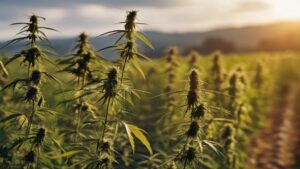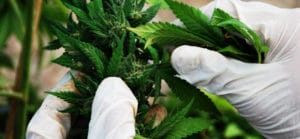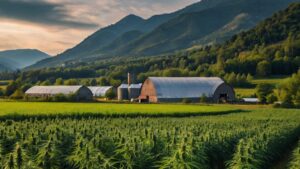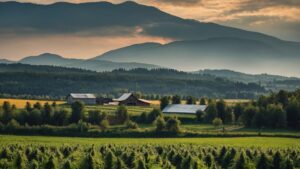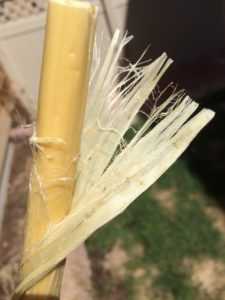
Nevertheless, every bit of this ancient plant is useful and valuable, and not just for rope, but for textiles, auto parts, cosmetics, dynamite, supplements, food, and medicine. In ancient China, hemp seed was regarded as food for the lower classes, and in Europe, a peanut butter-like spread was made from the seeds, in both cases with the hulls intact.
Today, you’ll find nutty-tasting (hull-less) hemp seeds and their oils baked in breads, cookies, and cakes, blended in smoothies, or tossed into quinoa and pasta dishes, burgers, pizza, vegetables sautés, soups, salads, oatmeal, yogurt, trail mix, and salad dressings. It’s a niche market, with a growing number of specialty outlets due to a growing understanding of this food’s nutritional benefits.
Cultivated in at least 30 countries, monikers for the hemp plant often allude to its origin or use, such as Manila hemp (abacá, Musa textilis), sisal hemp (Agave sisalana), Indian hemp (Apocynumcannabinum) and New Zealand hemp (Phormiumtenax). Worldwide, hemp seed production alone has soared from around 33,000 metric tons in the late ’90s to more than 100,000 metric tons annually between 2005 and 2011.
Jefferson penned, “Hemp is of first necessity to the wealth and protection of the country,” so hemp held a distinguished place in early America. Colonial farmers were required to grow it in the 1700s, mainly for its strong fiber.
By 1938, Popular Mechanics called hemp the “Billion Dollar Crop,”1 praising its potential to produce 25,000 different products, as high as $192 billion in today’s market and capable of producing four times the paper per acre than trees. Farmers from the Midwest to the East coast harvested more than 150,000 acres for the war’s Hemp for Victory Program, implemented by the USDA from 1942 through 1946, but rumblings by the competition had already started.
American industrialists led by newspaper mogul William Randolph Hearst (who owned vast timberlands) and DuPont executives, who’d begun processing petroleum and wood for plastics, became disgruntled by the way hemp cut into their market shares. A 1994 Vegetarian Times article2 describes the group’s devastatingly successful tactics for twisting the public’s perception of hemp:
“The plan? Whip the public into a frenzy over ill effects of marijuana, the psychoactive leaves and flowers of the hemp plant; the reputation of the fibers and seeds used by industry would be posing little threat to society emerged as the ‘assassin of youth.’ The strategy worked. In 1937, with virtually no warning, Congress announced a prohibitive tax on hemp, effectively ending the production and sale of the plant in the United States.
“The effects of the ban on growing hemp were widespread. Polluting, nonrenewable petroleum products replaced hemp lubricants and paints and oil… From that point on, hemp was viewed solely as an illegal drug; its role in constructing our national economy was forgotten.”
This perpetuated what may be one of the country’s biggest frauds. An aptly named article nailed it: “US Missing Out On Agricultural Millions Because The DEA Can’t Distinguish Hemp From Pot,”3 which is telling.
It’s not just the debate about medical marijuana. Part of the confusion is that some people assume hemp and marijuana are one in the same, especially since in explicably, they share the scientific name Cannabis sativa. But the word is not the thing. While they both belong to the same plant species, they’re two distinct varieties.
A website dedicated to the re-legalization of hemp4 briefly explains the three cannabis species:
- Cannabis Sativa– This annual herb in the Cannabaceae family has been cultivated for centuries for use as an industrial fiber, seed oil, food, drug, medicine, and spiritual tool. Mostly used for its long fibers, each part of the plant is harvested differently, depending on the purpose of its use.
- Cannabis Indica – The annual plant of the Cannabaceae family is considered a species of the genus Cannabis, but separate from Cannabis sativa, and originating in the Hindu Kush Mountains and suited for cultivation in temperate climates. Used to induce sleep, the plant is described as relatively short and conical with dense branches and short, broad leaves, while Cannabis sativa is tall with fewer branches and long, narrow leaves.
- Cannabis Ruderalis – Thought to be a cannabis species originating in central Asia, it flowers earlier, is much smaller, and can withstand much harsher climates than either Cannabis indica or Cannabis sativa. This species purportedly buds based on age rather than changes in length of daylight, known as auto-flowering. It’s used primarily for food production, such as hemp seeds and hemp seed oil.
Perhaps the most important difference between hemp and marijuana is that marijuana – no pun intended – has a high delta-9 tetrahydrocannabinol content, or THC, which supplies the sought-after psychotropic effect, but it’s low in cannabidiol content, or CBD, which has medicinal properties. Hemp is just the opposite, being typically high in CBD and low in THC, meaning it’s not going to get anybody stoned. In fact, clinical studies show that CBD blocks the effect of THC in the nervous system. Both THC and CBD contain cannabinoid, but it’s the amount that needs to examined, because CBD is currently a Schedule 1 controlled substance. That means that at present, there’s currently no permissible medical protocol in the US.
But recent activity in Washington has legislators in every aisle waving banners for hemp. So far, 20 states have stepped up to encourage industrial hemp production.5 On February 7, 2014, the 2013 Farm Bill6 was signed into law, legitimizing industrial hemp as distinct, and authorizing university and State departments of agriculture (where it’s legal) for research or pilot programs. On January 8, 2015, The Industrial Hemp Farming Act of 2015, S. 134, was introduced in the U.S. Senate.


